3D Printed Bluetooth Headphones
by ShannonL32 in Workshop > 3D Printing
6079 Views, 33 Favorites, 0 Comments
3D Printed Bluetooth Headphones
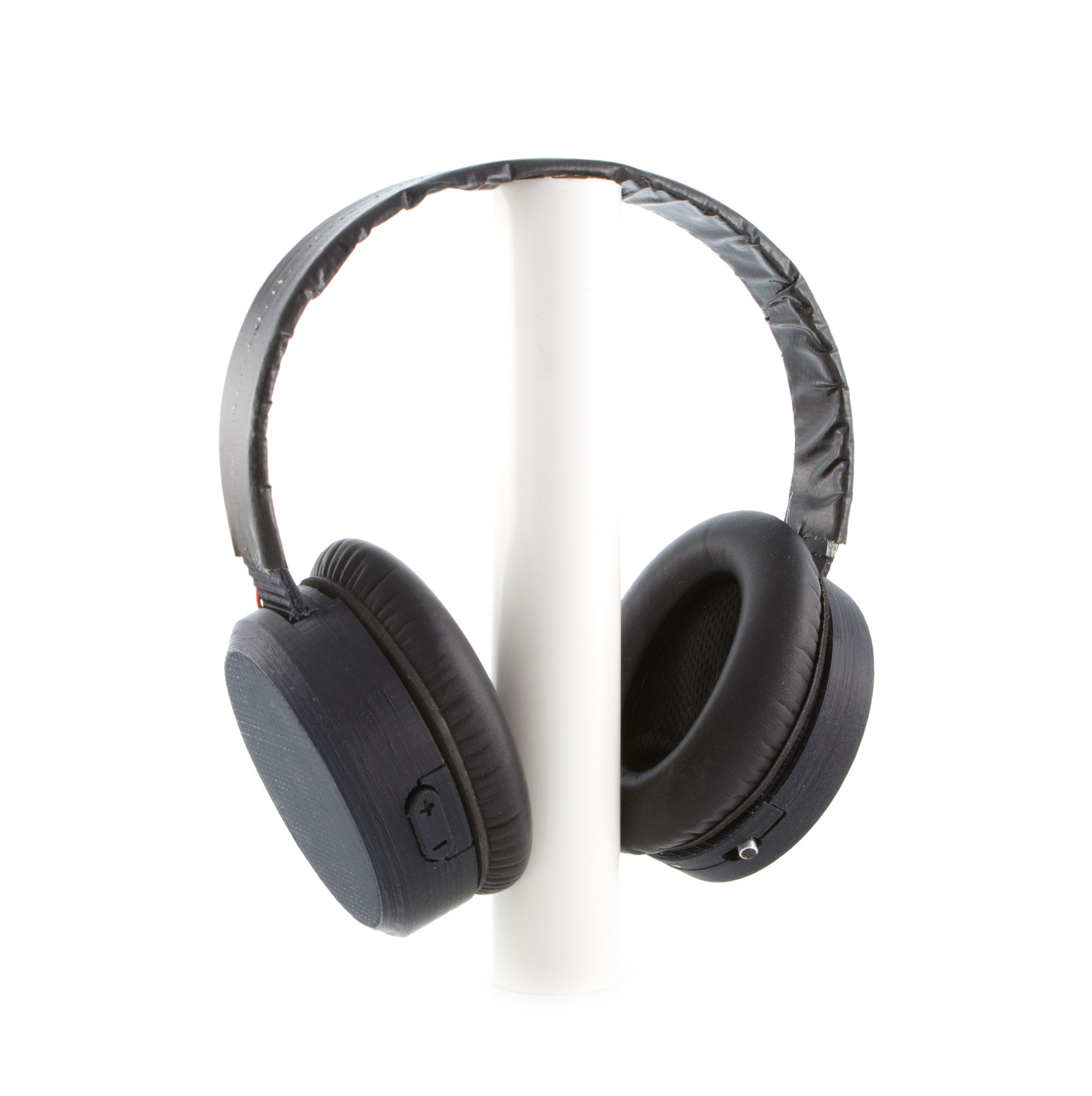
EDIT: There is a newer, improved version of this project, available at https://homebrewheadphones.com/3d-printed-bluetooth-headphones/
With the exception of the circuit board, all non-printed parts can easily be bought off Amazon, ebay, Parts Express etc. The circuit board can easily be made.
They sound absolutely awesome, have tons of battery life and are charged by micro USB cable.
If you're interested in the research I did into how the design variables affect the sound, it can be found at www.homebreheadphones.com
Parts List
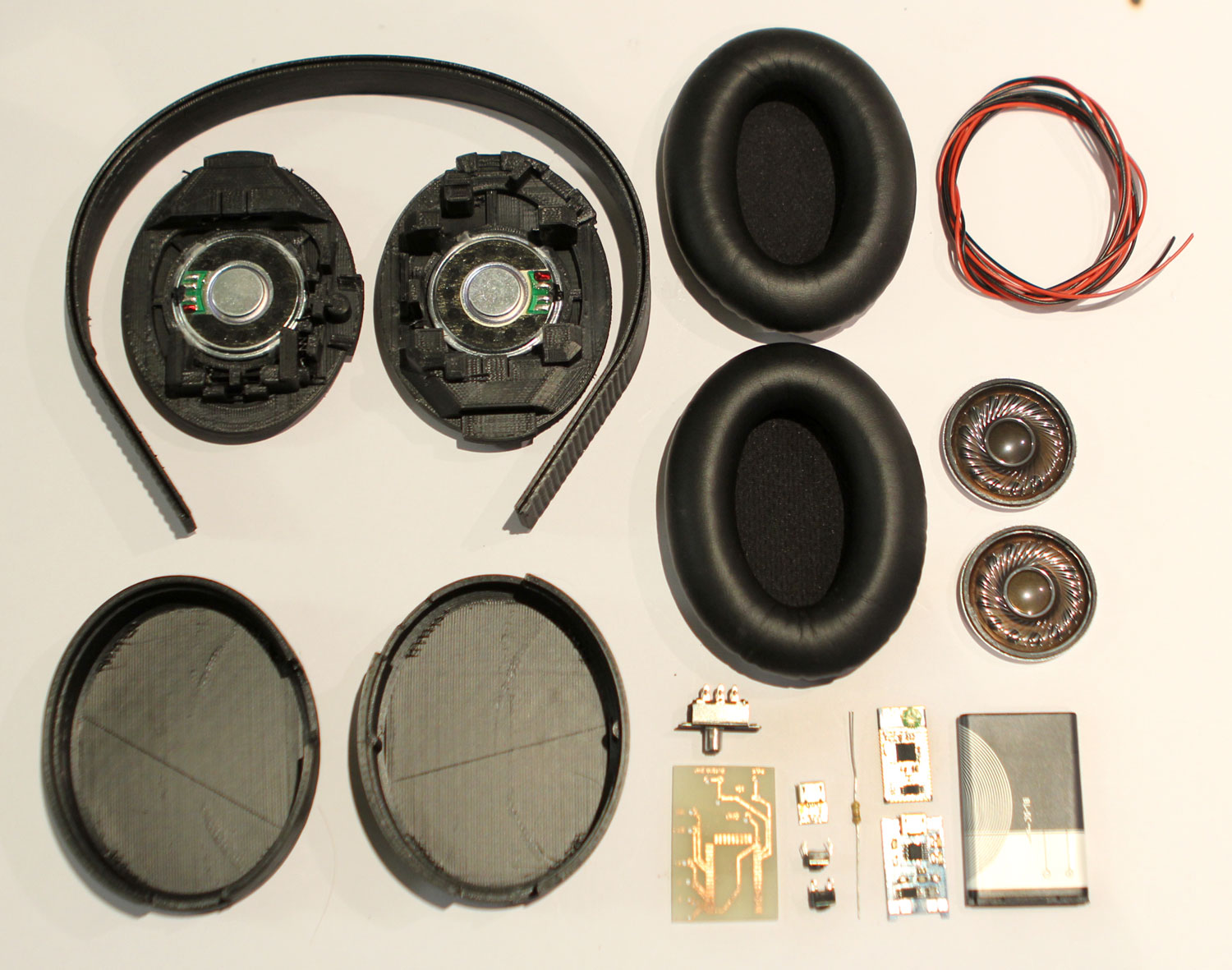
Parts to buy:
- CSR8645 bluetooth module such as http://amzn.to/2gRvXwM
- Micro USB Lithium Ion battery charge control module http://amzn.to/2wNFFFJ
- Micro USB breakout board http://amzn.to/2f8fLTZ
- Nokia BL-5C battery http://amzn.to/2eSg9ZI
- 2 x Dayton Audio CE38MB-32 drivers https://www.parts-express.com/dayton-audio-ce-ser...
- Bose QuietComfort QC15 QC2 replacement cushions http://amzn.to/2vSI9nl
- Plasticine
- 24 AWG hookup wire http://amzn.to/2eZbZPX
- Blank PCB board cut into 30mm x 50mm size
- Solder
- Gel consistency glue suitable for plastic, such as Loctite Gel Super Glue http://amzn.to/2eO3KlW
- 2 x Micro switches http://amzn.to/2jfeezP
- Slider switch http://amzn.to/2jheD59
- Ammonium Persulphate for etching PCB http://amzn.to/2wQ7MEZ
- Gaffer tape
- Masking tape
- 10k resistor
Parts to Print
- Left baffle http://bit.ly/2xTwhya
- Right baffle http://bit.ly/2wSAGlF
- Left cover http://bit.ly/2wiyEcq
- Right cover http://bit.ly/2fcatHg
- Volume button http://bit.ly/2jeUT1K
- Headband http://bit.ly/2jgcvKR
Step 1: Mount the Drivers
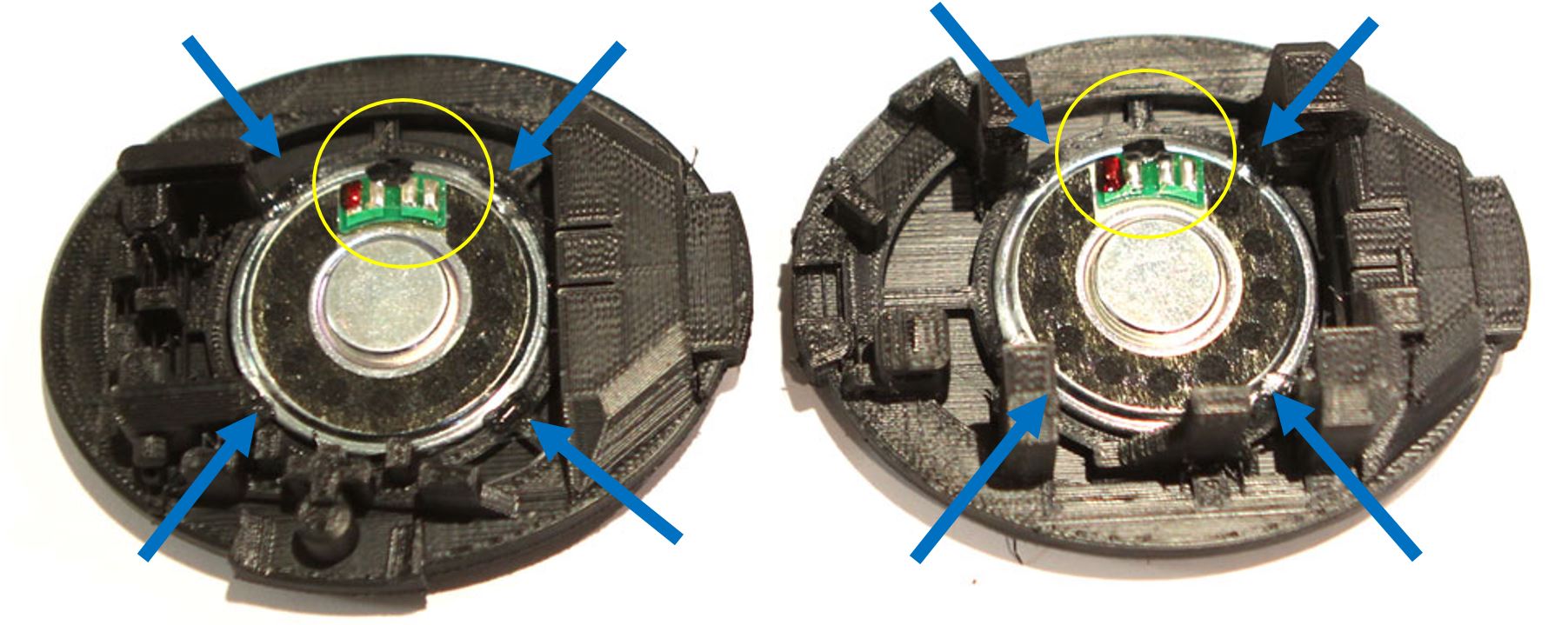
Insert the drivers into the baffles, oriented as per the yellow circles. Be extremely careful to not damage the fragile mylar film in the drivers.
Glue the drivers into the baffles with four 1/4″ (6mm) length spots of glue, placed evenly around the perimeter of the driver (blue arrows in the picture). DO NOT glue around the full perimeter of the driver, as this will adversely affect the sound.
Wait until the glue is dry…
Step 2: Tune the Sound
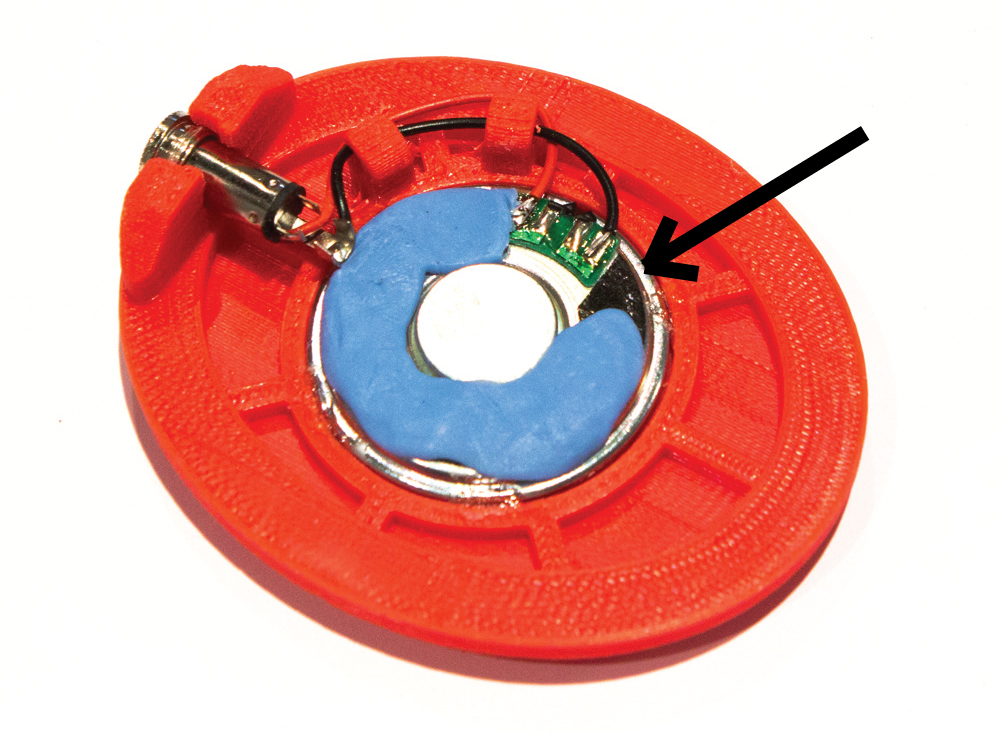
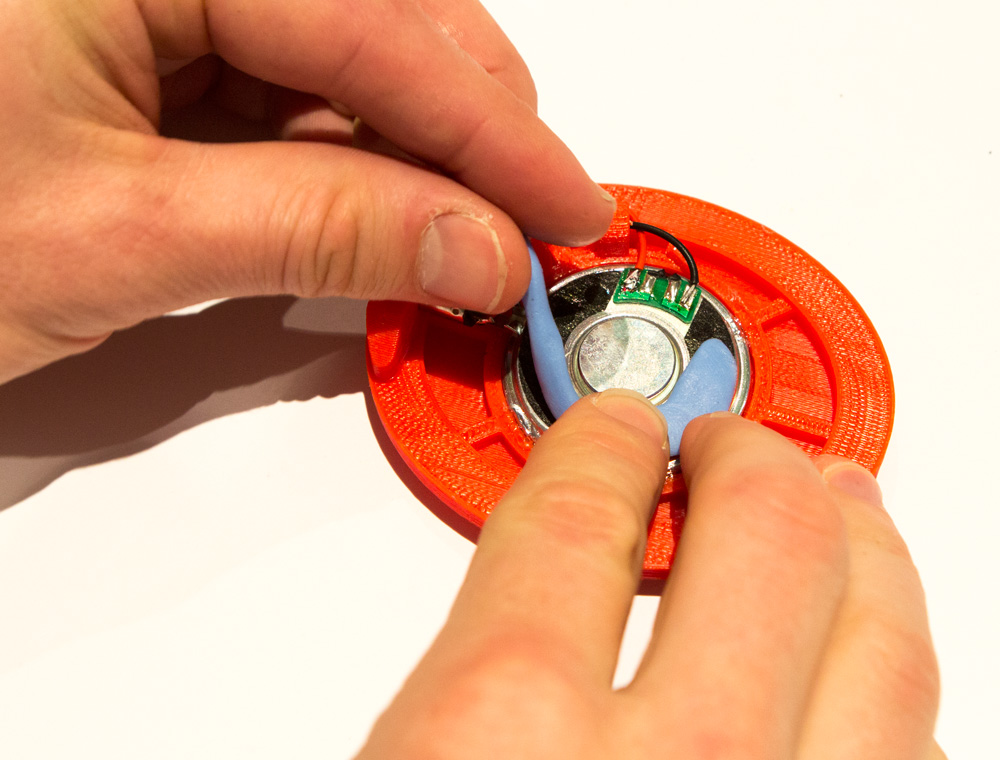
Now for the secret sauce! In this enclosure, the Dayton Audio CE38MB-32 drivers are way too bass-heavy and lack high end detail, so we need to reduce the mids/bass to make it more equal to the treble. You may think more-is-more when it comes to bass, but there will still be plenty after completing this step. If you don’t believe me, do a back-to-back comparison.
Using plasticine or similar, roll a small amount into a sausage then block all but one of the holes under the black fabric on the back of the driver. The black arrow in the picture shows the non-blocked hole.
Step 3: Wire Up the Battery Side
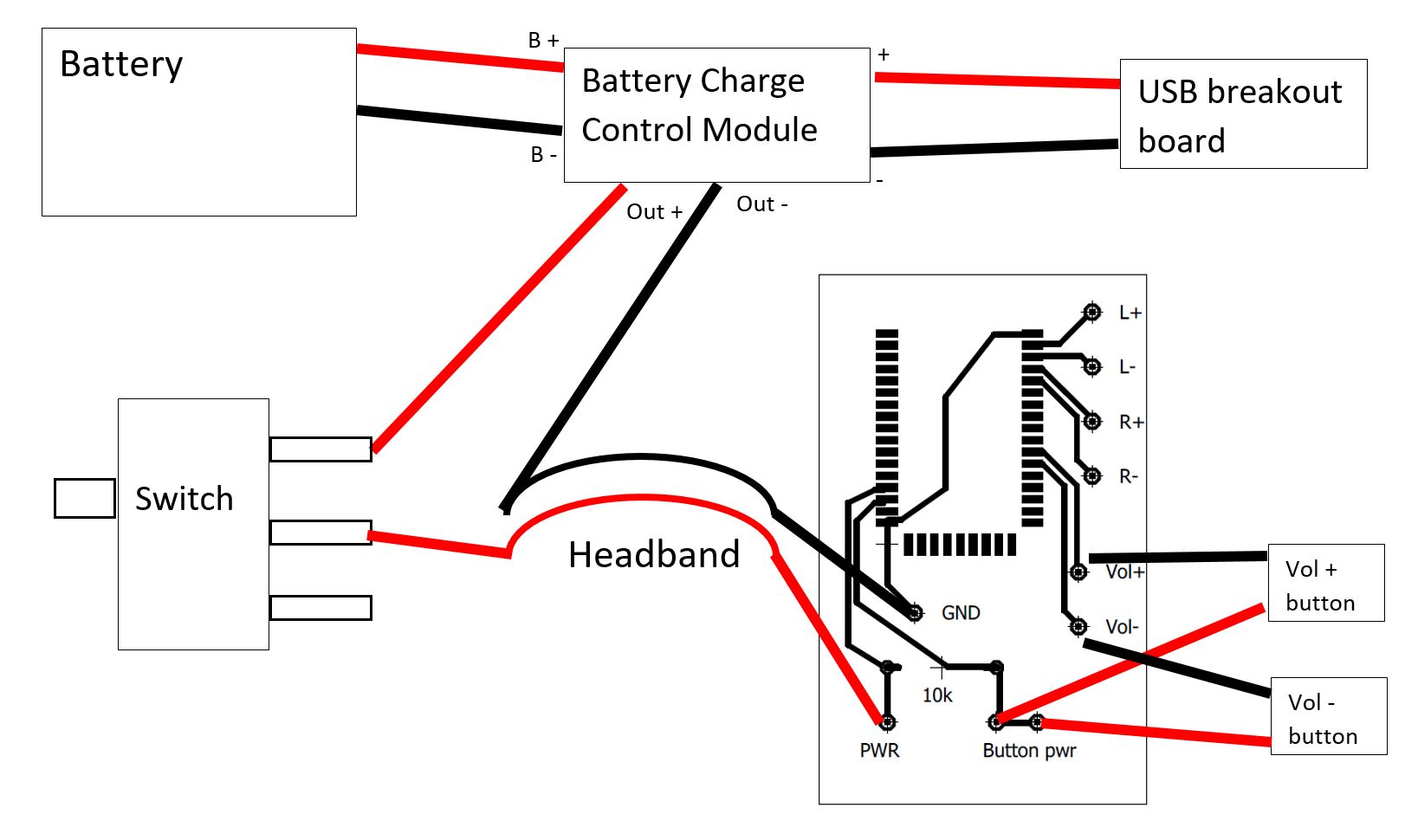

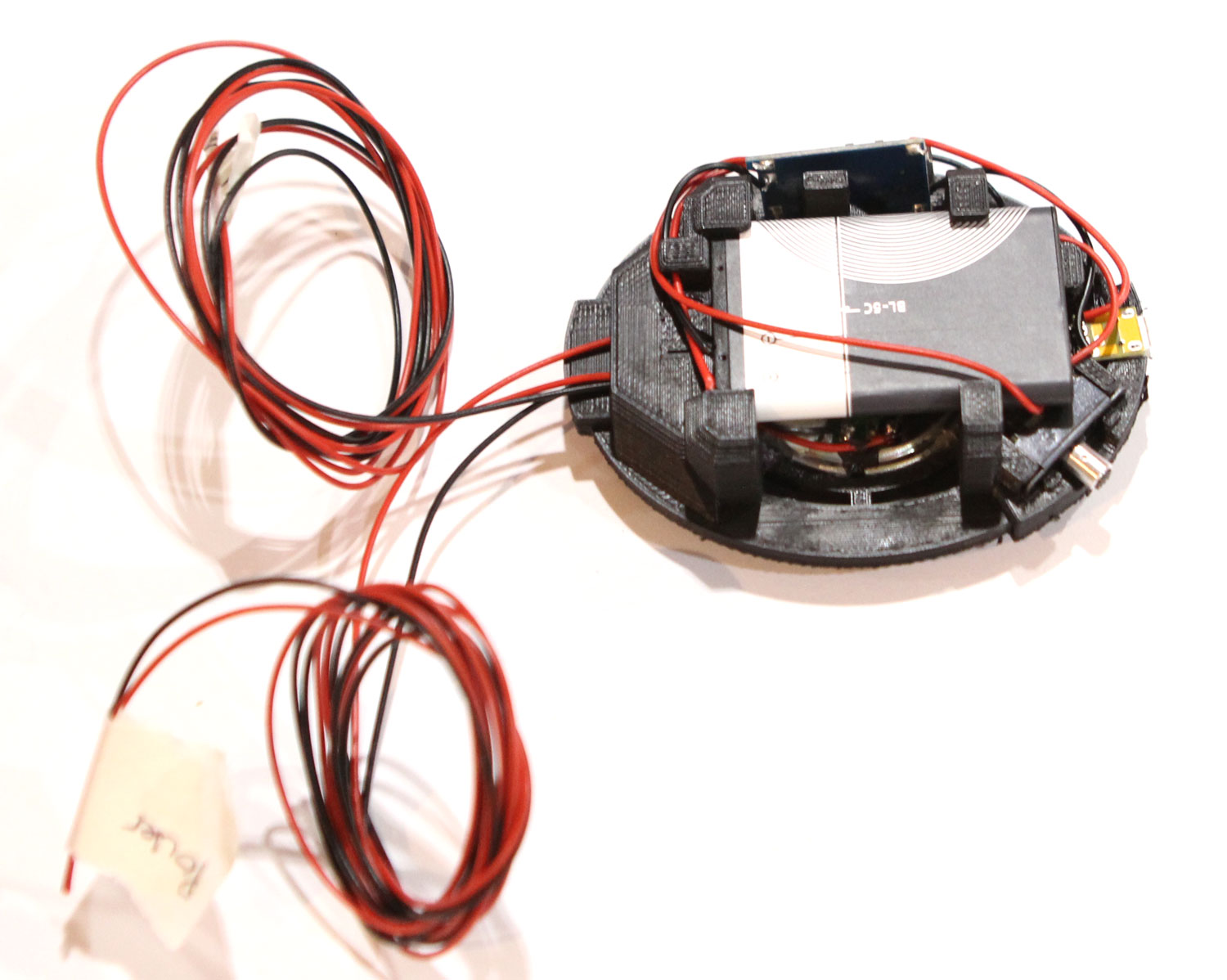
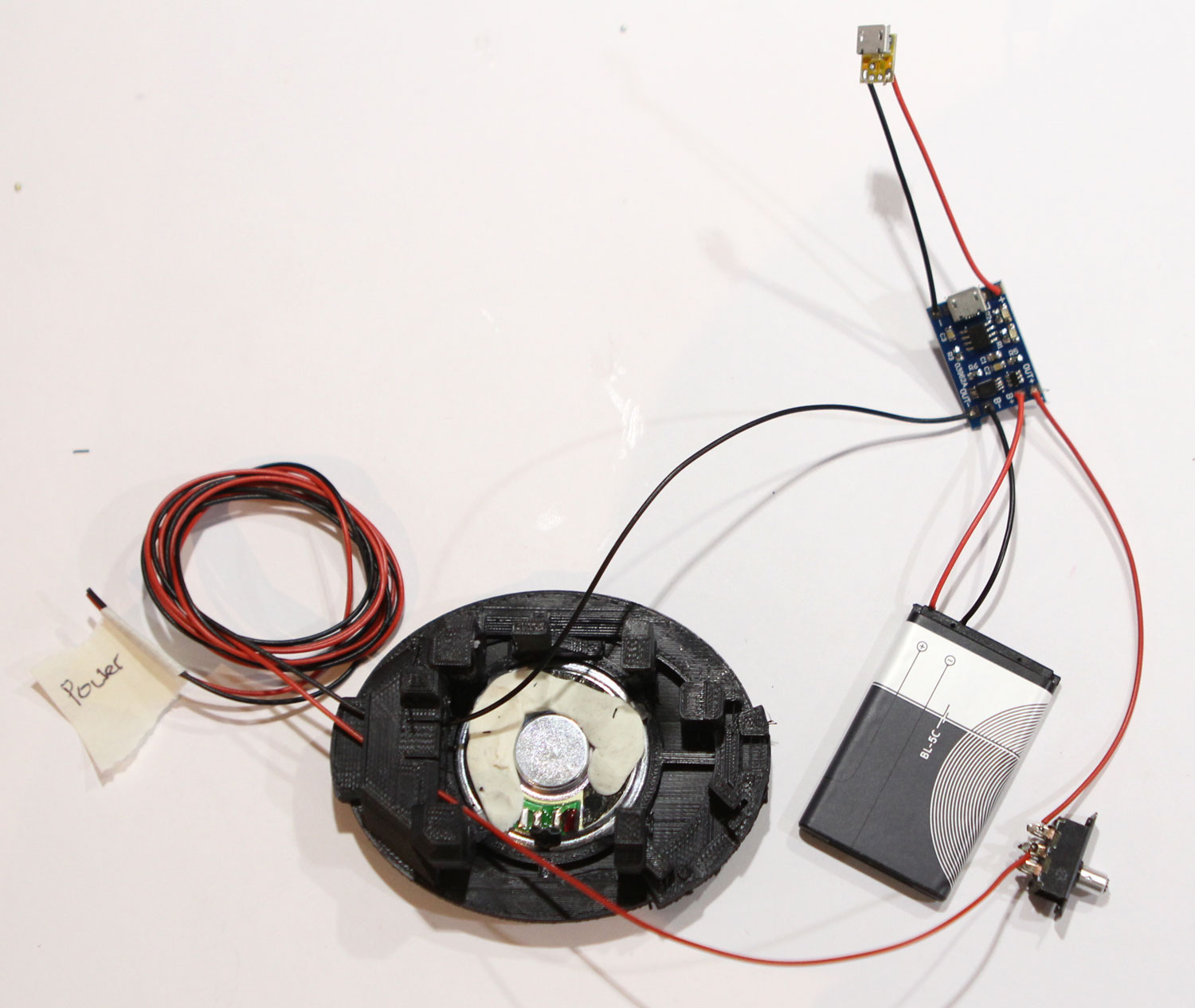
On the battery side, wire approx 50cm (20") of hookup wire to the driver terminals. Attach a label 'audio' and run it through the headband slot in the baffle.
Wire up the power electronics as shown in the drawing and picture.
Wire to the outer two terminals on the battery, as per +/- markings on the battery. I found the best way was to attach a blob of solder to the battery terminals, then re-melt it and slide on the wires.
Caution: be careful not to apply too much heat to the battery terminals. I would recommend wearing safety glasses too. Also be careful to not short the positive and negative battery wire ends.
Solder approx. 50cm (20") of hookup wire to the out- terminal of the BCM and the switch. This will route through the headband to the audio circuitry.
Run the wires through the headband slot and attach a label with ‘power’ to the wires.
Slot the USB breakout board, switch, BCM and battery into their positions on the baffle.
Step 4: Wire Up the Audio Side
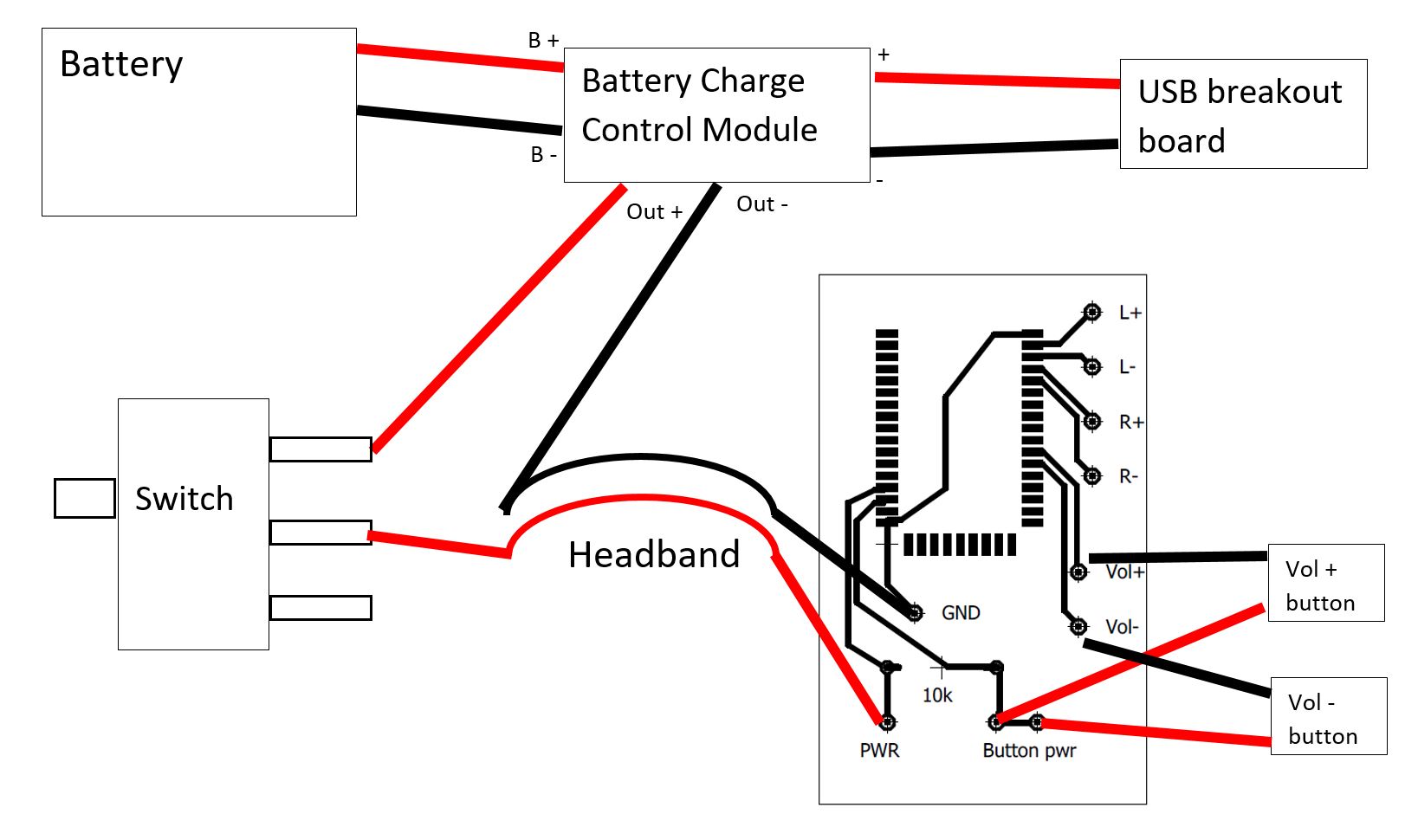
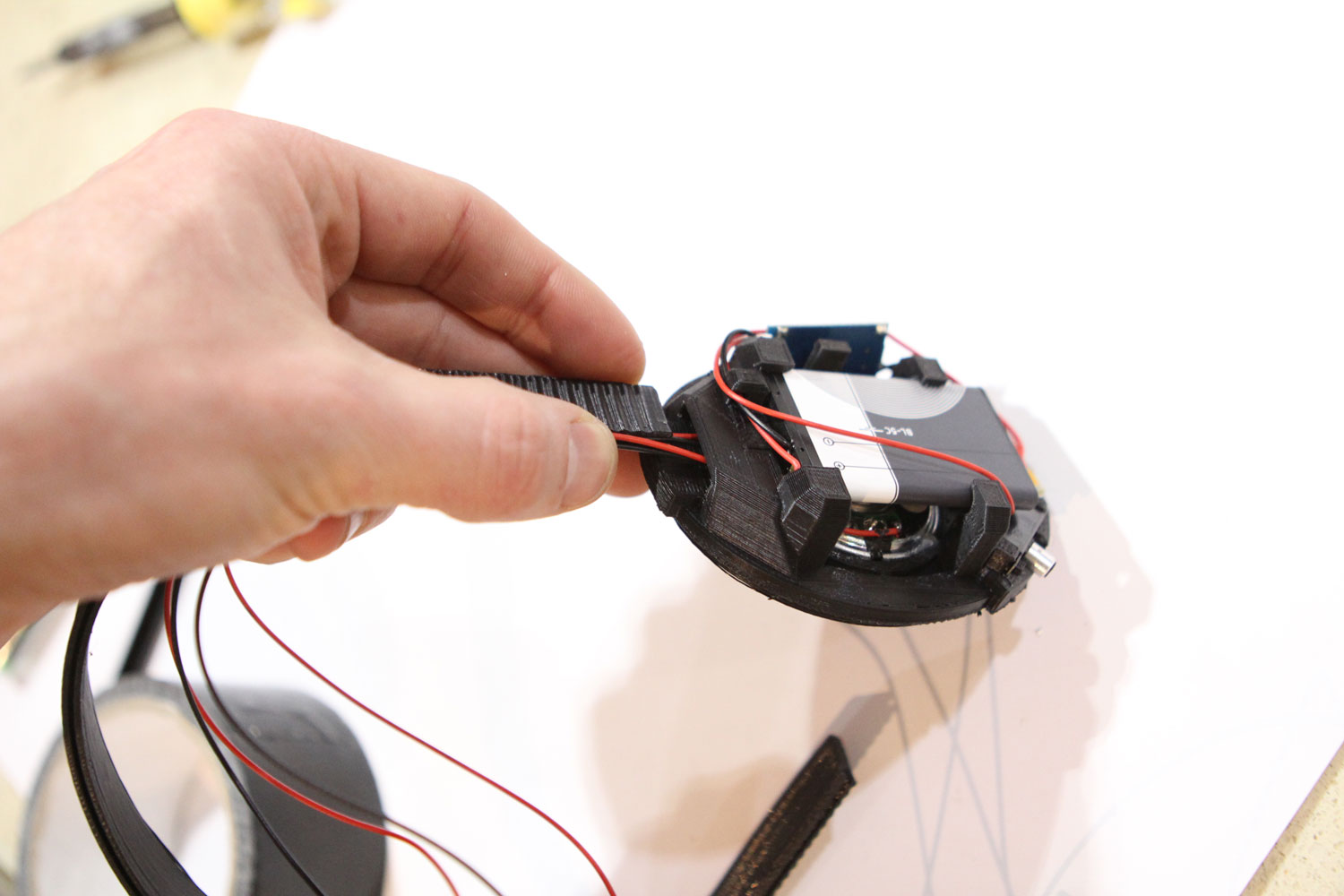
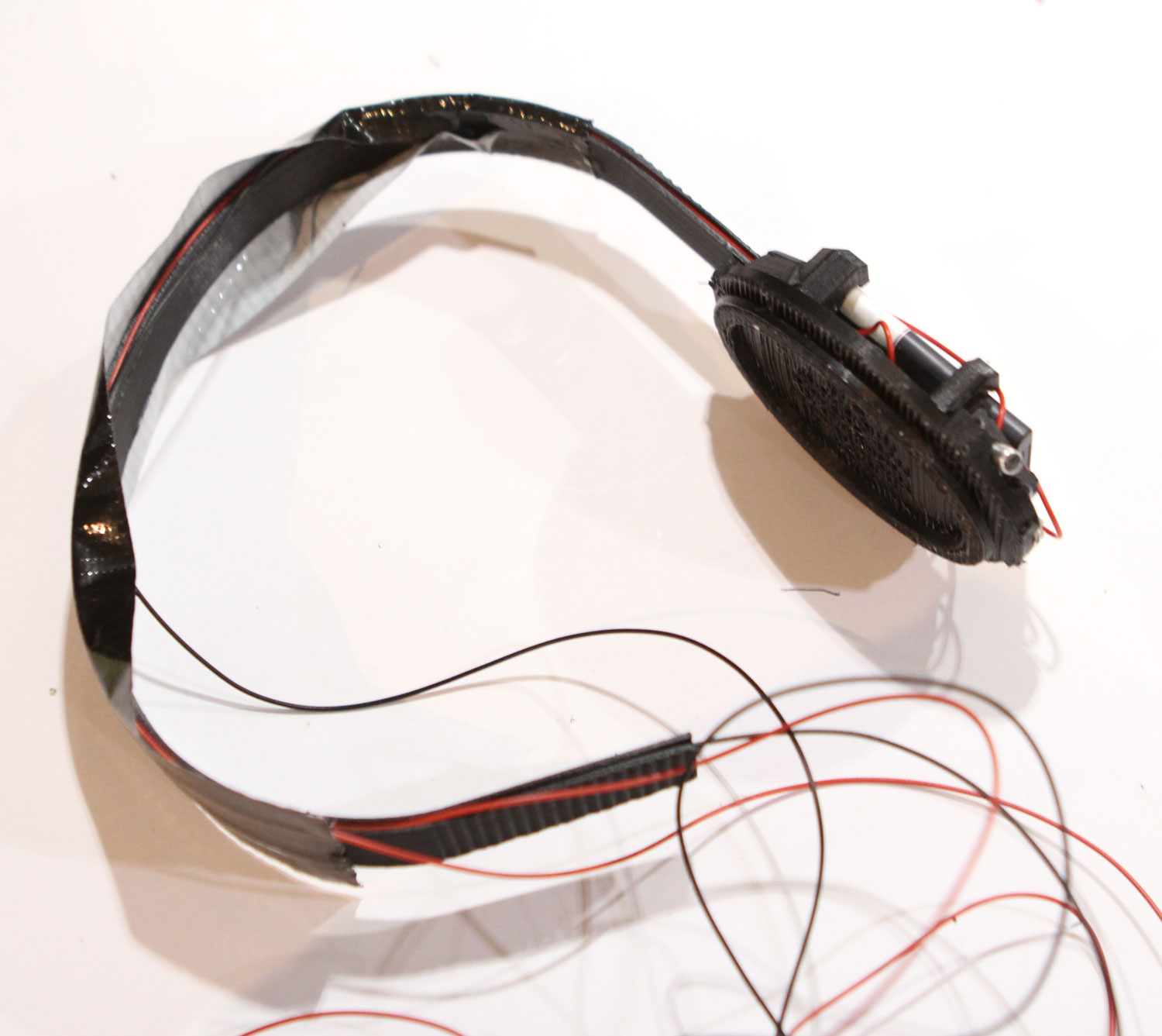
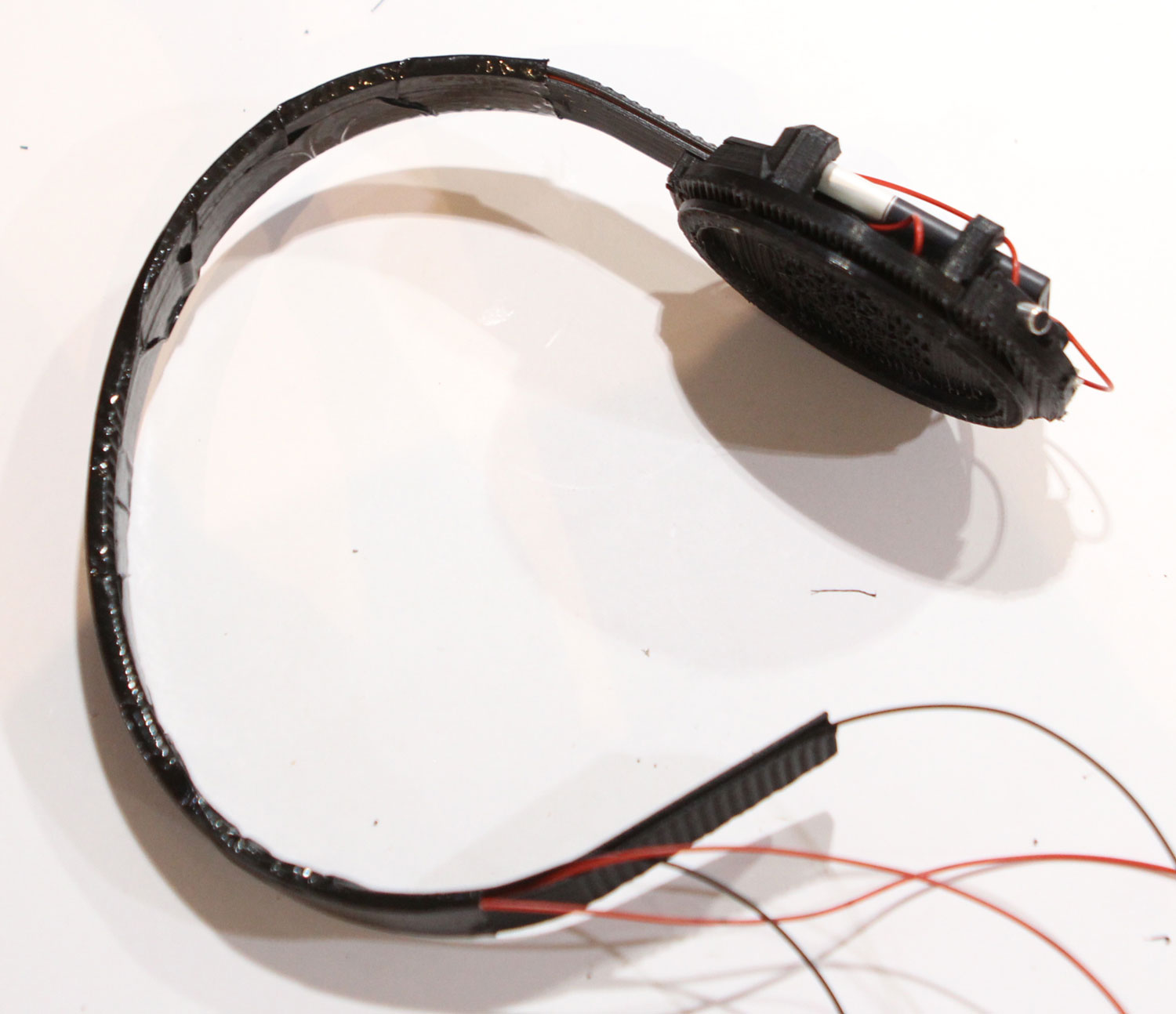
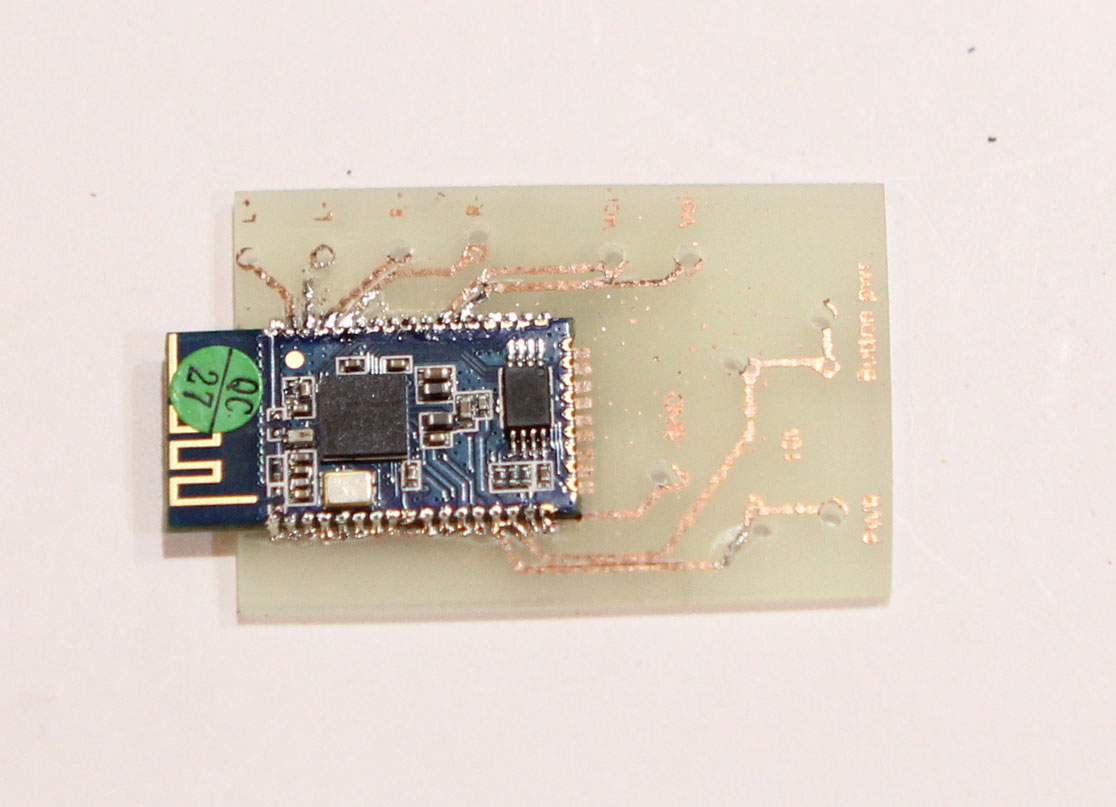
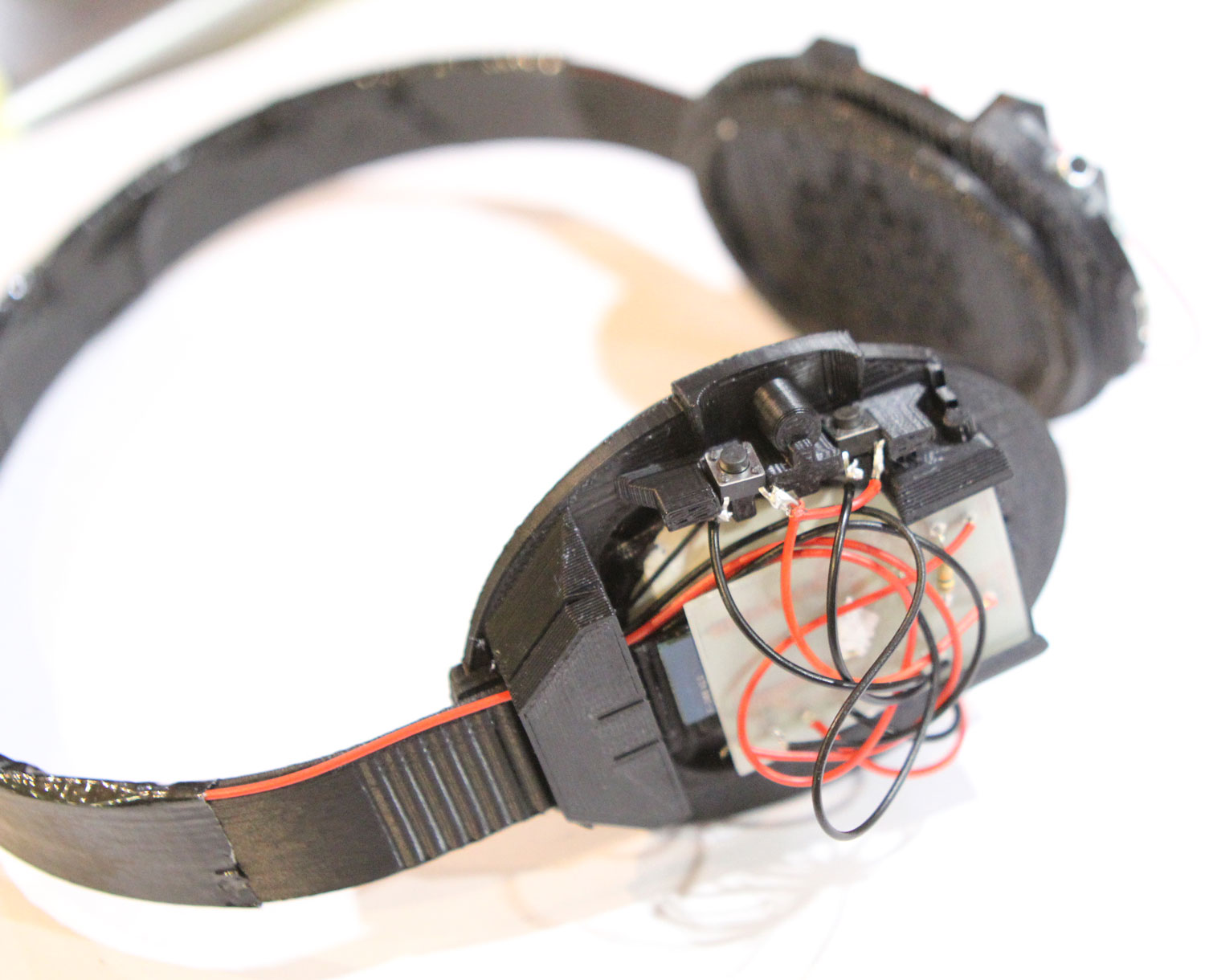
Make the PCB
Cut a 30mm x 50mm section of blank PCB material.
Print the circuit board layout (make sure it is 1:1 scale) on glossy paper using a laser printer. Using masking tape to hold it in place, put the printout face down on the circuit board and iron the back of the paper for approx 30sec, transferring the laser printer ink onto the circuit board.
Soak it in ammonium persulphate as per the instructions on the packet (I used 4:1 water to AP).
Drill the wire holes using 1mm drill.
Route the wires through the headband
Slot the 4 strands of hookup wire (power and audio) into the slot in the headband, working from the battery side with the headband just out of its slot.
Attach gaffer tape to the outside of the headband and fold it inwards, retaining the wires. Only run the tape between the two travel stops located on the inside of the headband.
Attach the headband to the battery side baffle.
Attach components to the circuit board
Using masking tape or similar, tape the Bluetooth module onto the circuit board, aligning the terminals and leaving one long side free.
Solder the Bluetooth module onto the circuit board. The easiest way is to run the soldering iron along the terminals, feeding solder on as you go. Inspect the terminals carefully, and run the soldering iron back and forth to solder any that were missed. If adjacent terminals are bridged, the solder can be worked away by cleaning the soldering iron and running it along the terminals. Repeat on all three sides.
Solder the 10k resistor in place. It sould be on the opposite side to the bluetooth board.
Using hookup wire, connect the micro switches and driver on the audio board side.
Run the battery side power and audio wires through the headband slots in the baffles and cut them to length. Then wire all the wires into the circuit board as per the diagram. Wire the driver on the bluetooth side to the circuit board.
Slot the circuit board into place and attach the headband to the bluetooth side.
Downloads
Step 5: Final Assemby
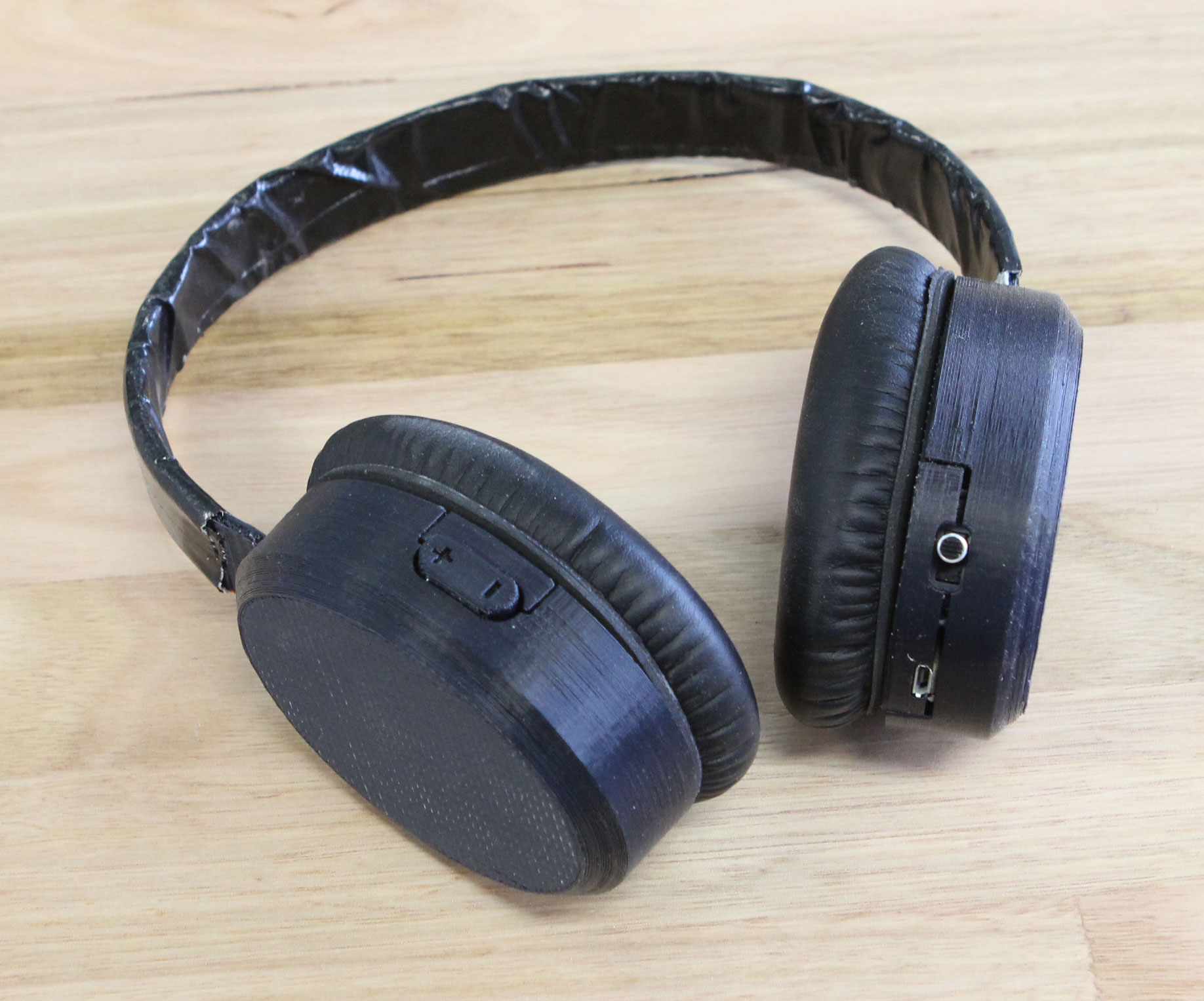
Fit the volume button, covers, cushions and felt to the baffles. The cushions are quite tight, but go on easiest if you fit a long side last.
In my case the Bluetooth ID was F-3188.
Turn them on, pair them up, crank them up and enjoy!